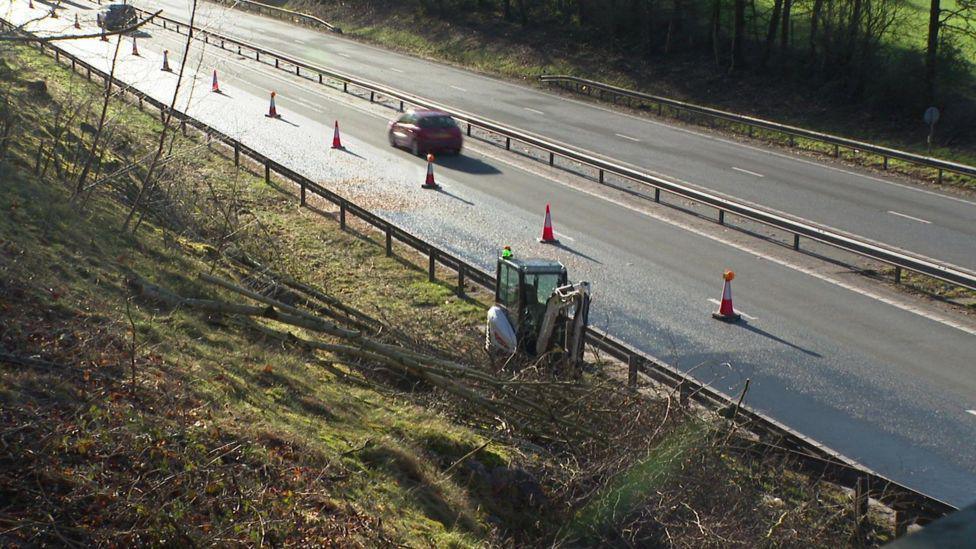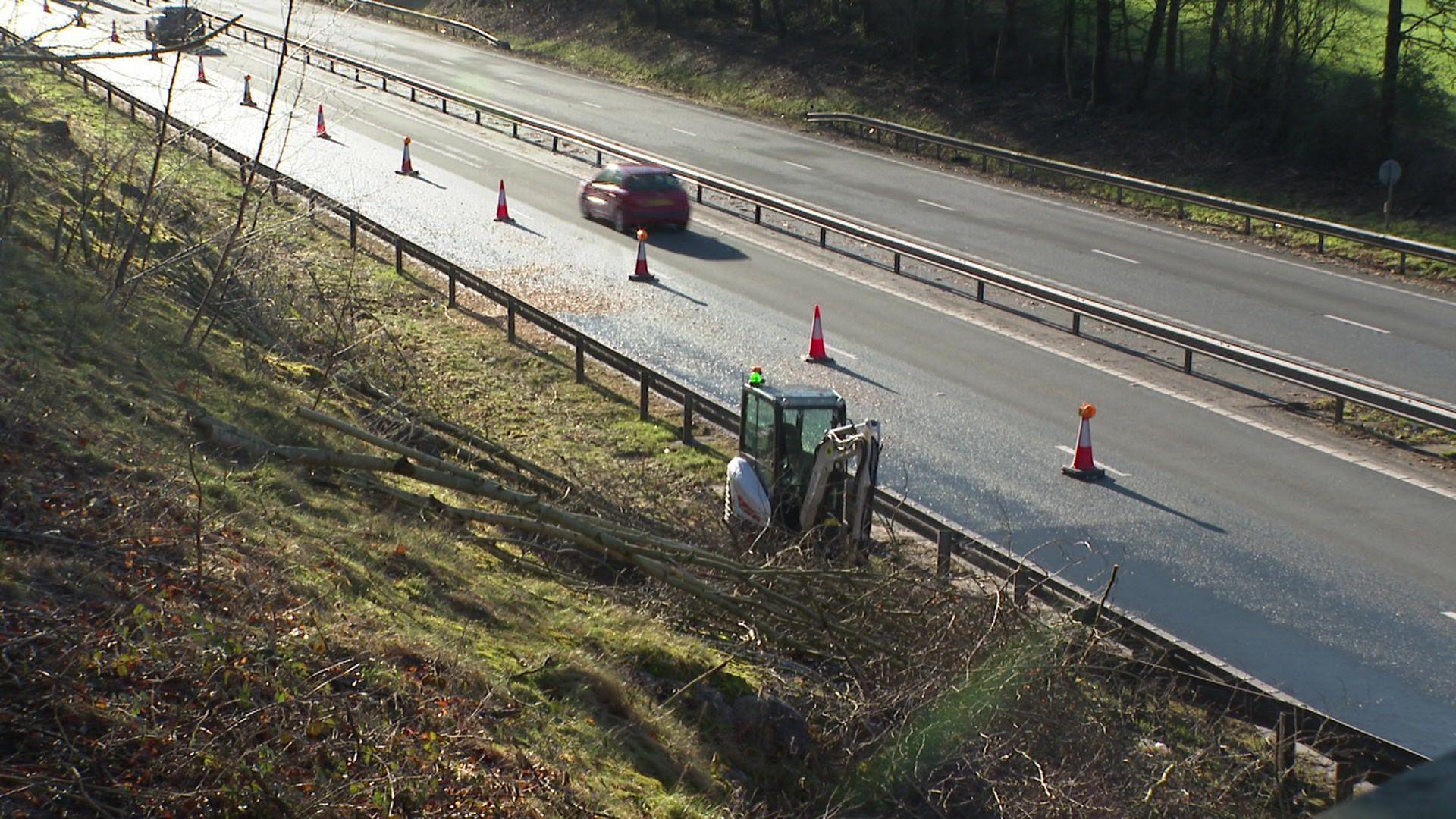Tree owners urged to look out for ash dieback

Ash dieback infects trees through their leaves
- Published
People who have ash trees on their property are being asked to inspect them for a disease.
Ash Dieback has been described by Cumberland Council as the worst tree disease since the Dutch Elm outbreak in the 1970s.
The council is working to remove infected trees across the county as there is a risk of them falling on to roads or buildings.
It also said it wants tree owners to familiarise themselves with symptoms of the disease so outbreaks can be managed on private property.
Ash dieback is expected to spread to 80% of UK ash trees at a cost of £15bn, according to the Woodland Trust.
Infected trees can become brittle and may fall or shatter without warning.
There is no cure for the fungal infection.

Thousands of trees are being felled near Cumbria's roads
Ash trees are a dominant species along roadsides in Cumbria.
The council has been surveying the trees along its road network so it can prioritise maintenance and felling.
Only trees that are dead, dying, diseased or dangerous are cut down, it said.
Denise Rollo, from Cumberland Council, said: "Ash trees are one of the most prominent trees in gardens, fields and hedges, and we now need urgent action by the owners of infected trees to ensure they don't become a danger to people or property.
"All trees should be regularly inspected by a qualified arboriculturists."
The council recommends visiting the Woodland Trust website, external, which offers advice on addressing ash dieback.
Follow BBC Cumbria on X (formerly Twitter), external, Facebook, external and Instagram, external. Send your story ideas to northeastandcumbria@bbc.co.uk.
Related topics
More stories from BBC North East and Cumbria
- Published1 February 2024
